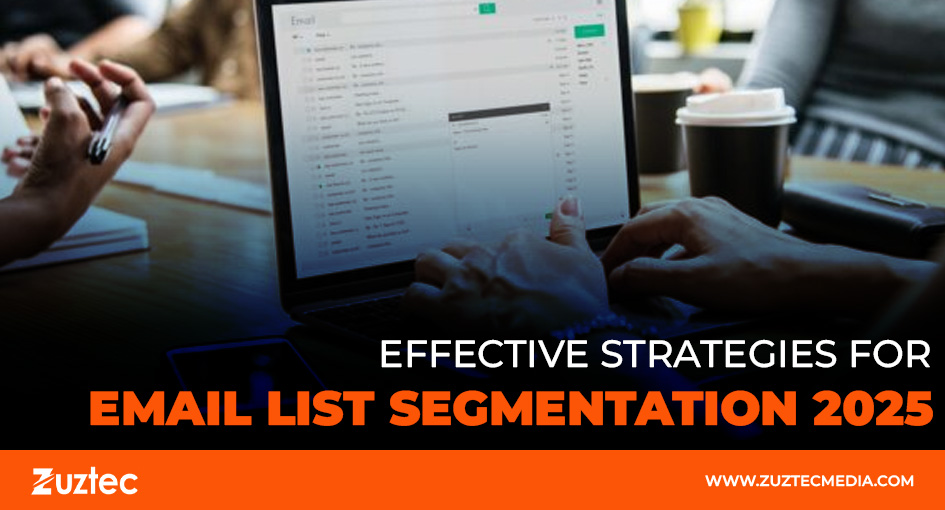
Effective Strategies For Email List Segmentation 2025
Email marketing continues to evolve, and personalization is now more important than ever. To create truly targeted experiences, businesses are focusing on how they collect, analyze, and use data. At the heart of this effort lies a powerful tool—email list segmentation 2025. In 2025, this technique is becoming essential for brands that want to stay relevant and competitive in a crowded digital marketplace.
Email list segmentation allows marketers to divide their subscriber lists into smaller, specific groups based on behavior, preferences, demographics, or engagement history. Instead of sending the same message to everyone, companies can tailor messages to each segment. This means more relevant emails, higher open and click-through rates, and better conversions. As consumer expectations grow, the need for these refined strategies is only increasing.
With advanced tools and platforms available today, segmentation can be incredibly precise. Businesses can track browsing activity, purchasing behavior, email interactions, and more. These insights help identify what a customer is most likely to engage with. For example, someone who frequently clicks tech product emails may receive different offers than someone who only shops for clothing. This approach helps reduce unsubscribes and keeps your brand message on point.
In 2025, segmentation is not just a nice-to-have—it’s a must. It enhances the overall email marketing experience by showing customers you understand their needs. Whether you’re a small business or a large enterprise, adopting email list segmentation practices can set you apart.
Why Email List Segmentation 2025 Is a Game-Changer
It refers to the latest practices in dividing email subscribers into meaningful segments based on real-time behavior, data trends, and personalized preferences. As digital marketing grows more competitive, consumers no longer tolerate generic emails. Segmentation is the path to meeting those expectations.
Modern email platforms now offer AI-powered features that analyze massive amounts of data and make intelligent predictions. You can create segments not just from age or gender but based on engagement patterns, purchase frequency, past interactions, and customer lifetime value. This makes it possible to build highly customized campaigns that match each user’s unique journey.
Timing also plays a big role. With segmented lists, you can send emails at the best times for each user group. Some may open emails early in the morning, while others are active at night. Segmenting by time preferences increases open rates and builds stronger user relationships. As brands compete for inbox attention, using segmentation is no longer optional—it’s fundamental to success.
How Segmentation Enhances Personalization and Engagement
Incorporating segmentation into your email strategy improves personalization and leads to deeper customer engagement. When users receive content that reflects their behavior or interests, they feel seen and valued.
One powerful midbody tactic in email list segmentation 2025 is creating dynamic content blocks. These elements change based on the recipient’s profile. For example, if two users receive the same campaign, one might see electronics while the other sees fitness gear, based solely on previous purchases or browsing history. This targeted approach keeps content fresh and relevant.
Segmentation also improves campaign efficiency. You’re not wasting time and resources sending irrelevant messages. Instead, you’re speaking directly to smaller groups with higher intent. Whether you’re launching a new product or promoting a sale, segmented emails allow for more refined messaging. You can even A/B test different versions of the same campaign to find what works best with each audience.
Top Segmentation Criteria and Tools for 2025
Effective segmentation starts with choosing the right criteria. In 2025, marketers have more options than ever. Popular segmentation criteria include purchase history, engagement level, location, device usage, and even the weather. The goal is to find the factors that most influence customer behavior and tailor messages accordingly.
Email marketing tools such as Klaviyo, Mailchimp, ActiveCampaign, and HubSpot now offer sophisticated segmentation features. These platforms allow marketers to automatically assign tags, track real-time data, and build smart segments that update dynamically. This means your lists stay fresh and reflect the most current user behavior.
Machine learning also plays a growing role. These algorithms learn from each user’s interactions and adapt future messages based on outcomes. For example, if a customer typically opens promotional emails but ignores newsletters, the system will adjust future content to prioritize offers over updates. This kind of predictive personalization would be impossible without advanced segmentation.
Turning Segmentation Into Business Growth
When you align your messaging with customer preferences, you’re more likely to build trust and inspire action. Segmented campaigns often lead to higher open rates, click-throughs, and conversions—metrics that directly influence revenue.
Segmentation also helps maintain a cleaner list. By regularly evaluating who engages and who doesn’t, you can remove inactive subscribers or move them into re-engagement funnels. This ensures your list remains healthy and improves overall campaign effectiveness. A smaller, more responsive list is often more valuable than a large, unengaged one.
In conclusion, as we move further into the era of intelligent marketing, email list segmentation 2025 offers businesses a powerful way to refine their communication strategy. It’s more than just organizing names—it’s about creating personalized journeys that build loyalty and drive results. By using data wisely and focusing on relevance, brands can stay ahead of the curve and keep their subscribers coming back for more.

